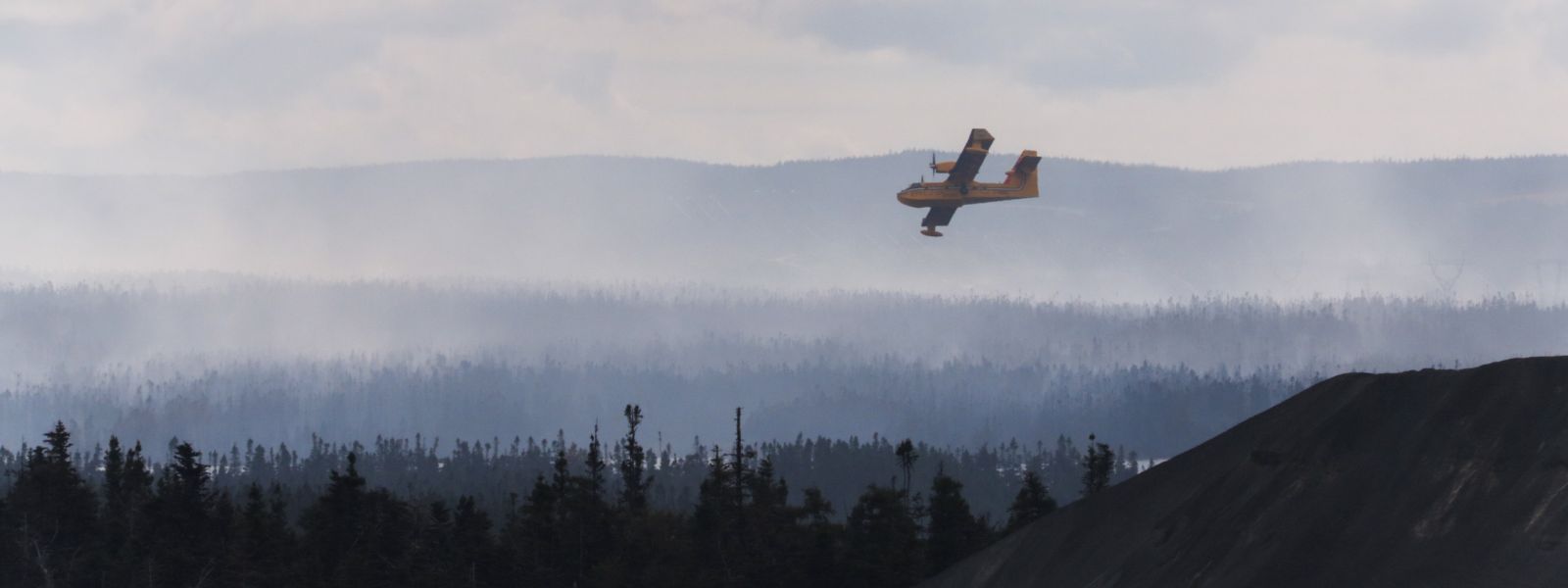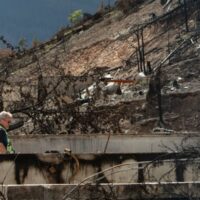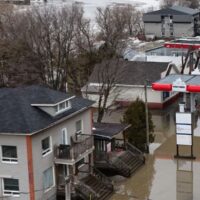This article was previously published in The Hill Times.
Canada is rightfully focused on increasing its competitiveness to support trade (both interprovincial and international) and drive economic growth. But here’s the thing: it’s not just new American unpredictability that poses a threat to our competitiveness. Escalating climate risks can undermine Canada’s nation-building efforts just as gravely. And conversely, proactively building resilience into those efforts can pay big dividends.
Canada’s trade infrastructure is particularly vulnerable to climate change. Trade is the backbone of the Canadian economy and central to staving off the impact of the Trump tariffs. In a moment of global trade recalibration, it is more important than ever that Canadian roads, railways, and ports keep goods and services moving across borders and between provinces. But in our increasingly volatile climate, they are being disrupted much more frequently.
Storm damages to infrastructure, supply chains, and communities are already a big economic drag, and increasingly threaten our long-term prosperity. Real-world data shows a growing toll from climate-driven events on infrastructure, health, and productivity. Insured and uninsured losses from floods, wildfires, hail, ice storms, and wind events have skyrocketed. In 2024, insured property damages in Canada reached $8.5 billion, twelve times the annual average of $700 million between 2000 and 2010. And for every dollar of insured damage, about two additional dollars in losses typically go uninsured, further inflating economic losses.
In short, there is a strong case for Canada to rethink our economic and climate resilience policies together.
Climate-related damages and their toll on the Canadian economy will only get worse without decisive adaptation action. Canadian Climate Institute research projects that the cost to Canada’s economy from additional climate change since 2015 reached $25 billion in 2025—half a year’s GDP growth. If we fail to act now, this could rise to $78-101 billion by 2050, and a staggering $391-865 billion by 2100.
In 2021, the extreme flooding in British Columbia—made 60% more likely by climate change—severed all major routes between the Port of Vancouver and the rest of Canada. The Coquihalla Highway alone suffered damage at more than 20 locations, halting billions in goods movement. Rail lines were cut. Truckers rerouted through the U.S., farmers lost livestock, and grain exporters faced massive delays. These kinds of outcomes aren’t localized disruptions—they are national economic shocks.
To safeguard our economic future, Canada’s approach to bolstering our assets must match the scale and urgency of the threat. And that threat is growing and pervasive coast-to-coast-to-coast.
The path forward is to treat climate-resilient infrastructure as a project of national interest. Our modelling shows the payoffs are substantial with every $1 invested in key adaptation measures preventing $15 in GDP losses. Other countries like the United Kingdom and New Zealand are already moving, recognizing that resilient infrastructure and supply chains are prerequisites for economic stability.
Canada must invest in ourselves, toughening up the trade-critical infrastructure that will keep our economy moving through climate shocks. If we fail to keep pace, our vulnerabilities will grow and our competitiveness will erode.
Like energy infrastructure, major adaptation projects, especially those linked to trade and productivity, demand urgent, coordinated action from federal and provincial governments. Governments need to make climate-proofing trade corridors and economic infrastructure an immediate national priority. That means:
- Identifying where critical trade infrastructure is at risk from extreme climate events—like the B.C. Lower Mainland, or the Chignecto Isthmus in Atlantic Canada.
- Dedicating a share of trade infrastructure investment—like the $5 billion promised in the federal Trade Corridor Diversification Corridor Fund—to making priority trade infrastructure more resilient.
- Establishing clear technical requirements for new trade infrastructure projects to ensure they are resilient to a changing climate.
Building climate resilience is no longer optional. We need to reframe investments in adapting to increasingly disruptive climate-related disasters as essential to nation-building and long-term wealth creation. Climate change is relentless, and much like our neighbour to the south, disruptive, and unpredictable. Climate damages are hitting home, and Canadian governments must make fortifying infrastructure a cornerstone of our national interest and a central pillar of economic strategy—starting now.








